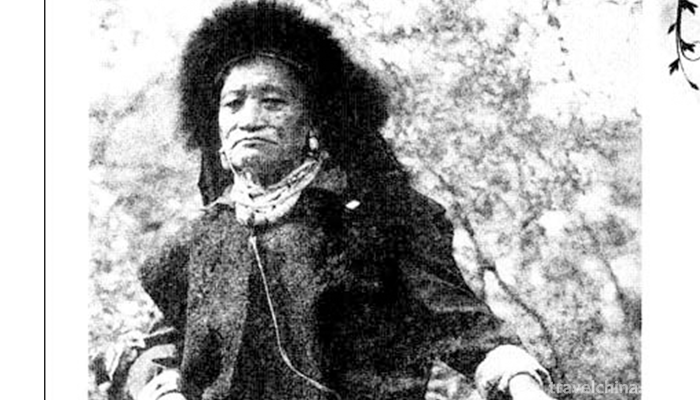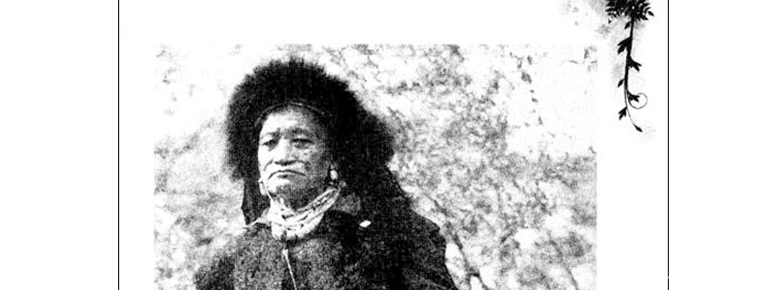Legend of the Ancestors of the Loba Nationality
Legend of the Ancestors of the Loba Nationality
The legend of the ancestors of the Loba nationality is an organic part of the life of the Loba people, a mirror of the Loba society and a way of existence of the folk life of the Loba people.
The legend of the ancestors of the Loba nationality has successfully declared the national intangible cultural heritage protection project, which will be more conducive to the protection of the folk culture of Loba.
On May 23, 2011, the "Legend of the Ancestors of the Loba Nationality" declared by Milin County of Tibet Autonomous Region was listed in the third batch of national intangible cultural heritage list with the approval of the State Council.
Historical origin
The Loba nationality mainly distributes in the Loyu area in southeastern Tibet and adjacent counties such as Chayu, Motu and Milin. The word "Loba" originates from Tibetan, which means "Southerners" and is the Tibetan appellation for them. Since ancient times, the Loba people have lived in the foothills of the Himalayas. Because of the high mountain barrier, the Loba people have little contact with the outside world and the social development is slow. Until the 1950s, the Loba tribes were still using the original way of slash and fire to engage in agricultural production, planting maize, upland rice and other miscellaneous grains.
The Loba people living in the northern part of Metou County use Tibetan, while the other Loba people use Loba. The Loba language belongs to the Zang-Burmese language family of the Sino-Tibetan language family. The dialects of the Loba people in different areas are different. Before the founding of the People's Republic of China, the Loba people also used carved wooden knots to record things. There is no native language, and a few people speak Tibetan. The Loba people believe in the primitive religion of animism.
primary coverage
Abadani, the ancestor of the Loba people, originally lived in Gongbu, but later moved to Baden Banga, Milin Village, where he settled for a period of time. Abadani had three sons, the eldest was Dangbang, the second was Dangjian, and the third was Dangjian. Abadani's three sons migrated southward in three ways and entered the Loyu area. When Bang took his two sons westward and southward through the Lilonggou, and crossed Sedanloya to settle in the Degen area, their descendants became the later Degen tribes. On that day, Bang and his two sons lived in the Nayu Valley (now in the area of Nanyi). When their descendants, the Bo and Garbo brothers, crossed the Nayudongla along the valley southward, and arrived at the place of Delen Bang. In archery competitions, Garbo's arrows landed on both sides of the fruit, the later Manigan; Garbo followed the direction of the arrows and settled there, and his descendants were Bogars.
After one beautiful legend after another, it is a festival after another. Festival culture is one of the most obvious characteristics that distinguish the Loba nationality from other nationalities.
Gesang, Deputy Minister of Propaganda Department of Milin County Committee accompanied by interviews along the way, told reporters that due to the dispersed living and inconvenient transportation of the Loba people, the dates of the annual festivals vary from place to place, usually after the annual labor. In the festivals of the Loba people, "Gongbu Festival" is the most famous. "Gongbu Festival" is the Tibetan calendar October 1, is the most grand festival of the year in Gongbu area (Milin County, Linzhi County, Gongbu Jiangda County). During the Gongbu Festival, organs, enterprises and institutions in Linzhi District have to take holidays, and the festival atmosphere is warm from the city to the countryside.
Forms of expression
Loba song, dance and music have the most national characteristics and are an important part of the spiritual culture of the Loba people. The Loba people often invite folk singers to perform in their labor, especially in festivals, religious ceremonies and other collective activities. The forms of performance are solo, duet and chorus. When singing, the folk singer usually touches the scene in the traditional tune, has the feeling and sends out, exports for the song. The content of the song is mostly based on the ancient myths, legends and stories of the Loba people, or on the political, historical, natural common sense, family and marriage in reality, and depicts the colorful life of the Loba people from different perspectives.
The clothes of the Loba people are obviously different from those of the Tibetans. Owing to their long hunting years, Loba men usually cross long knives, wear fur hunting clothes and fur caps. Women wear short shirts with round collar and narrow sleeves, skirts with tight lower body and wrapped legs. The waist and neck of both men and women are covered with heavy ornaments. Both men and women of the Loba nationality like to wear a sophisticated belt, which is made of rattan, leather, wool and various color patterns. The belt is used not only to tie the dress, but also to hang knives, sickles and other ornaments made of copper and shellfish.
The living customs of the Loba people are deeply influenced by the Tibetans, and their daily diet and food preparation methods are basically the same as those in the Tibetan agricultural areas. He likes roast meat, dried meat, milk dregs and buckwheat cakes, especially millet-stirred rice dumplings and chili peppers. I like to eat a kind of buckwheat cake baked on the slate. This kind of buckwheat cake smeared with chili paste and cheese while it is hot is very sweet and delicious. Both men and women like chili pepper, snuff and alcohol.
Inheritance status
The totem worship of the tribes and clans of the Loba Nationality has been carried on from generation to generation until today. This legacy is an important form of ancient primitive religious beliefs of mankind. They prayed for the blessings of ghosts and gods, often killed animals and sacrificed ghosts or asked wizards to recite sutras, and used witchcraft to restrain ghosts.
Inheritance significance
The legend of the ancestors of the Loba people is an integral part of the life of the Loba people, a mirror of the Loba society, and a way of existence of the folk life of the Loba people. People can see the historical development of the Loba people from the legend, which leaves precious and living historical data of life and culture for future generations.
The legend of the ancestors of the Loba nationality has successfully declared the national intangible cultural heritage protection project, which will be more conducive to the protection of the folk culture of Loba, and more conducive to the inheritance and development of the project.


-
1.Aba Tibetan and Qiang Autonomous Prefecture
abbreviated as Aba Prefecture, is a national autonomous prefecture in Sichuan Province
Time 2018-10-13 -
2.Shanghai Fangta Garden
Fangta Garden is one of the gardens in the ancient city of Songjiang, which is mainly composed of historical relics. The garden covers an area of 182 mu. The site was originally the downtown center of
Time 2018-12-19 -
3.legend of butterfly lovers Liang Zhu
Legend of Liang Zhu (Legend of Liang Shanbo and Zhu Yingtai) is a sad and moving love story. It is also called four ancient Chinese folklores with Meng Jiangnu, Niulang Zhinu and White Snake Biography
Time 2018-12-23 -
4.Linhe Yellow River National Wetland Park Inner Mongolia
Inner Mongolia Linhe Yellow River National Wetland Park is located in Linhe District, Bayannaoer City, Inner Mongolia Autonomous Region, with a total area of 4637.6 hectares. The functional zoning map
Time 2018-12-26 -
5.88 Floor Sightseeing Hall of Jinmao Building
Jinmao Tower's 88th floor sightseeing hall, located in Shanghai, China, has a height of 340.1 meters and an area of 1520 square meters. It is the largest sightseeing hall in China at present. It is th
Time 2019-01-26 -
6.Traditional Cotton Textile Techniques
Chinese traditional textile technology has a long history. Since cotton was introduced from India in the 7th century, Chinese textile industry has changed from linen to cotton.
Time 2019-04-19 -
7.Guangdong embroidery
Guangdong embroidery is the general name of Guangzhou embroidery (Guangzhou embroidery) and Chaozhou embroidery (Chaozhou embroidery). It is one of the four famous embroidery in China.
Time 2019-07-16 -
8.Encouragement of Sangzhi Battle
Sangzhi Bai people's fighting drum is mainly distributed in seven Bai villages and towns, such as Mahekou, Maidiping, Furong Bridge, Hongjiaguan, Zoumaping, Linxi River and Liu Jiaping. In other half
Time 2019-07-25 -
9.Bamboo carving
Bamboo carving, a traditional folk carving art, uses bamboo roots to carve characters and animal and plant images, or carves characters and pictures on bamboo materials and bamboo utensils. Usually al
Time 2019-08-10 -
10.Diexi earthquake site
Diexi earthquake site is located 2.5 km southeast of Jiaochang Township, Maoxian County, on the second grade platform on the East Bank of Minjiang River
Time 2020-11-07 -
11.Panzhihua before Sui Dynasty
Archaeological discoveries have proved that Panzhihua is one of the areas where human activities took place earlier. In addition to the "Yuanmou Man" and "Butterfly Man" relics found in nearby areas, the huilongdong ancient human site about 18000-12000 years ago has been found in Panzhihua City.
Time 2020-12-14 -
12.Ecological environment of Luzhou
On July 5, 2019, the Ministry of ecology and environment of the people's Republic of China announced the special investigation of black and odorous water bodies in the first stage of overall planning and strengthening supervision in 2019. Luzhou was listed in the "list of cities whose
Time 2020-12-14